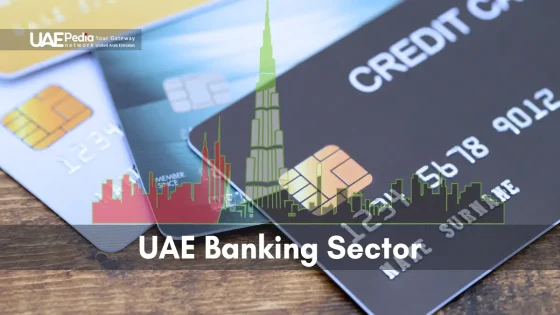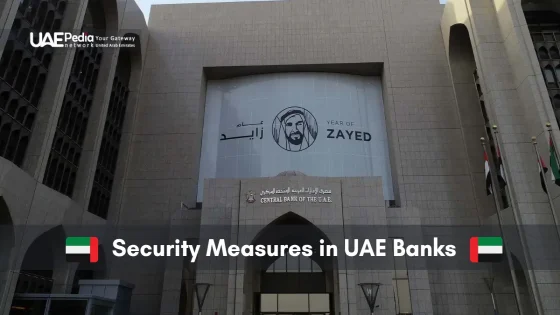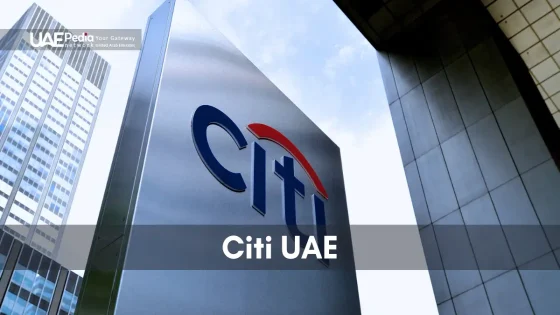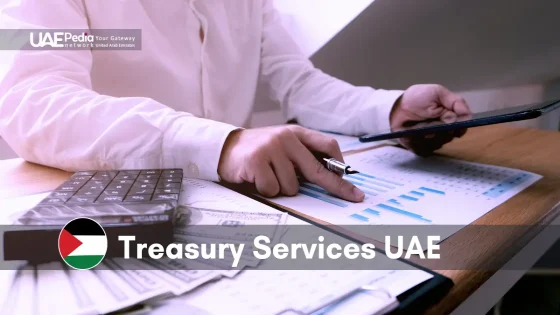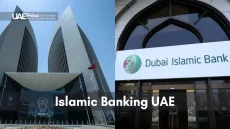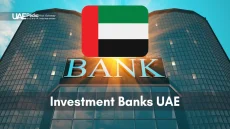How does a nation of 10 million establish global financial leadership? The UAE’s banking sector is a secret success story. With [Updated 2025 Data] local, GCC, and foreign banks, it’s a financial powerhouse.
The UAE provides diverse banking models, including conventional and Sharia-compliant services. It demonstrates resilience during global economic volatility. Banking contributes significantly to the UAE’s non-oil GDP, driving economic diversification.
Abu Dhabi and Dubai lead the UAE’s banking sector. It’s moving forward with digital and fintech changes. The UAE is a great place for businesses, attracting global banks.
Looking into UAE banks, it’s clear this small nation is a big player in finance. The major players in UAE banking are global leaders, shaping finance in the Middle East and beyond.
The UAE Banking Sector: Regional Dominance and Strategic Evolution
The UAE banking sector is a big deal in the region. It has a strong economy and helps the country grow. Let’s look at what makes this sector so important.
Market Overview: Assets, Credit Expansion, and Liquidity
The UAE’s economy is strong and diverse. The oil and gas sector is big, but other areas are growing too. By the end of 2023, the banking sector’s assets hit AED 4,075.2 billion, up 11.1% from the year before.
By Q2 2024, the UAE had 23 local banks, 7 Gulf country banks, and 21 foreign banks. The sector’s assets grew 11.3% from June 2023 to June 2024. Deposits went up 13% and capital and reserves rose 3.9% to AED 495.2 billion.
UAE’s real-time payment system Aani processed 400,000 daily transactions in 2025, with 1.5 million users and 100,000 merchants adopting mobile-number/QR-based payments—driving 20-30% monthly growth. Ref.: “Transforming UAE’s digital economy with innovative payment solutions.” [!]
CBUAE: Regulation, Innovation, and Financial Stability
The Central Bank of UAE (CBUAE) is key to the nation’s finance. It makes money policy, keeps things stable, and watches over banks. The CBUAE Rulebook standardizes regulatory compliance across institutions.
Recently, the CBUAE started new things like a fintech sandbox and a blockchain payment system. They also tested a digital currency project. This shows they’re into new ideas in finance.
Regulatory Framework and Compliance
UAE banking has strict rules. Islamic banks follow one law, and conventional banks follow another. The CBUAE makes sure banks meet high standards, like Basel III.
They watch over things like protecting customers, fighting money laundering, and digital banking. With new rules for Open Finance, the CBUAE wants to make it easier and safer to share financial info. This helps the UAE stay a top financial place.
Central Bank of UAE’s 2022 Digital Transformation Strategy mandates AI integration, cloud security, and fintech R&D—exemplified by Emirates NBD’s deployment of GitHub Copilot X for 1,000+ developers to accelerate coding efficiency. Ref.: “Emirates NBD to transform business operations and enhance productivity with generative AI.” [!]
UAE Banking Sector Development and Growth
The UAE banking sector exhibits robust growth: We’re seeing serious financial growth. Let’s dive into the juicy details of this banking bonanza.
UAE banking growth has been impressive. By the end of 2023, banks saw their total assets jump to AED 4,075.2 billion. That’s an 11.1% increase from the year before! Talk about a growth spurt.
But wait, there’s more! Credit expansion in the UAE is also making waves. Gross credit expanded by 6.0%, hitting AED 1,991.7 billion. And get this – customer deposits? They’re through the roof! We’re talking a 13.5% increase, totaling AED 2,521.9 billion. That’s a whole lot of dirhams, folks!
| Metric | Growth Rate | Total Amount (AED) |
|---|---|---|
| Total Assets | 11.1% | 4,075.2 billion |
| Gross Credit | 6.0% | 1,991.7 billion |
| Customer Deposits | 13.5% | 2,521.9 billion |
| Capital and Reserves | 14.0% | 488.7 billion |
The banking assets growth in the UAE isn’t just about numbers. It’s a sign of a robust and resilient financial sector. Even the Islamic banking sector is getting in on the action, making up 23% of total banking assets in 2022. That’s AED 845 billion, folks!
So, whether you’re a finance geek or just curious about UAE deposit growth, one thing’s clear: the UAE banking sector is booming, and it’s showing no signs of slowing down. Exciting times ahead for the financial landscape in the UAE!
UAE banks achieved a 100% surge in digital banking channel usage by 2025, reflecting strategic alignment with the Central Bank’s Digital Transformation Strategy and high customer trust (84%, ranked #2 globally). Ref.: “UAE Banks Federation confirms a 100% increase in the use of some digital banking channels.” [!]
Banking Models: Conventional, Islamic, and Foreign Institutions
The UAE has many banks for different needs. You can find conventional banks and Islamic finance options. These services help both people and businesses.
Conventional Banking System
UAE conventional banks are very important. They offer services like retail and corporate banking. These banks have a lot of money and are stable.
Islamic Banking Framework
Islamic finance holds 23% of UAE banking assets (2022), reflecting sustained demand. These banks follow Islamic rules and offer services like Takaful.
“read more: UAE Business Ethics Standards and Practices“
Foreign and Local Banks
The UAE has both local and foreign banks. Local banks are owned by governments. Foreign banks, like Citigroup, bring new ideas. The Central Bank makes sure everything is fair.
Fragmented crypto regulations pose risks for UAE banks; HODL 2025 Summit emphasized global coherence needs as DeFi projects scale—highlighting gaps in cross-border oversight. Ref.: “HODL 2025 opens in Dubai, advancing the Emirates position as a global financial innovation hub.” [!]
Specialized Financial Institutions
The UAE also has special banks for certain needs. There are finance companies, moneychangers, and investment banks. These banks need a lot of money to be stable.
| Institution Type | Key Features | Regulatory Requirement |
|---|---|---|
| Conventional Banks | Retail and corporate banking services | Capital Adequacy Ratio: 17.9% (2023) |
| Islamic Banks | Shariah-compliant services | 23% of total banking assets |
| Finance Companies | Personal loans, trade finance | Minimum capital: AED 35 million |
| Moneychangers | Currency exchange, remittances | 60% national shareholding |
The UAE’s banking system meets many needs. It supports the country’s economy and keeps finances stable.
Read More:
Fintech Leadership: AI, Blockchain, and Digital Banking Growth
The UAE banking sector is changing fast. Fintech UAE is leading the way. Banks are spending a lot on mobile banking UAE apps and online platforms. The Central Bank of UAE (CBUAE) supports this change. They make sure everything is safe and stable.
UAE digital banking is real and changing how we manage money. Emirates NBD, with over 20 million customers, is using AI in every customer interaction. This is a big step in banking innovation, UAE! The CBUAE and Microsoft are training 10,000 finance experts in AI. The Emirates Institute of Finance is also starting an “Innovation Hub” with six labs. It’s like a playground for finance geeks.
UAE faces a critical AI talent shortage, prompting initiatives like Microsoft’s 1M AI learner program and Emirates NBD’s GenAI Summit 2025 to upskill bankers—though 36% of firms report generative AI already created new roles. Ref.: “Future Trajectory of AI in the Gulf (2024–2025 Outlook).” [!]
UAE e-banking is growing fast, with 4,654 ATMs across the country as of December 2023. It’s not just about being easy to use. It’s also about including people who’ve never had a bank account before. There are challenges like cybersecurity and tech issues. But with teamwork and new ideas, UAE’s banking sector is ready to take off into a digital future.
